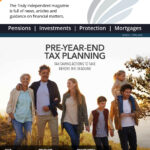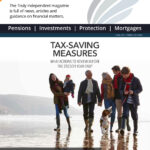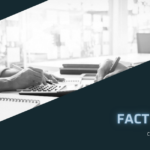New initiatives you need to know from the 2018/19 tax changes.
It’s important to consider the tax implications of making financial decisions. The 2018/19 tax year is now upon us and a raft of new changes have come into force. The good news is that there is little change in the overall tax burden for basic rate taxpayers. However, there are a number of areas that have changed that should be taken note of.
Here’s what you need to know about the 2018/19 tax year changes and new initiatives.
Personal Allowance
The tax-free Personal Allowance is the amount of income you can earn before you have to start paying Income Tax. All individuals are entitled to the same Personal Allowance, regardless of their date of birth.
In the 2017/18 tax year, the Personal Allowance was £11,500, and it rises to £11,850 in the 2018/19 tax year. This means you can earn £350 more in the 2018/19 tax year than in the previous tax year before you start paying Income Tax. However, bear in mind that the Personal Allowance is reduced by £1 for every £2 of an individual’s adjusted net income above £100,000.
A spouse or registered civil partner who isn’t liable to Income Tax above the basic rate may transfer £1,190 of their unused Personal Allowance in the 2018/19 tax year, compared to £1,150 in the 2017/18 tax year to their spouse or registered civil partner, as long as the recipient isn’t liable to Income Tax above the basic rate. You are eligible for this transfer if you are married or in a civil partnership, you don’t earn anything, or your income is £11,850 or less and your partner’s income is between £11,851 and £46,350 (or £43,430 if you’re in Scotland).
Higher Rate Threshold
The threshold for people paying the higher rate of Income Tax (which is 40%) increased from £45,000 to £46,350 in the 2018/19 tax year (this does not apply in Scotland). This new figure also includes the increased Personal Allowance.
Dividend Allowance
The Chancellor of the Exchequer, Philip Hammond, announced in the Spring Budget 2017 that the Dividend Allowance would reduce from £5,000 to £2,000 from 5 April 2018.
Any dividend income that investors earn above the £2,000 allowance will attract tax at 7.5% for basic rate taxpayers, while higher rate taxpayers will be taxed at 32.5% and additional rate taxpayers at 38.1%.
This may impact on shareholders of private companies paying themselves in the form of dividends, for example, rather than salary. Investors with portfolios that produce an income in the form of dividends for more than £2,000 a year, which are held outside ISAs or pensions, will also be affected by the reduction in the allowance.
National Insurance Contributions (NICs)
NICs will be charged at 12% of income on earnings above £8,424, up from £8,164 until you are earning more than £46,350, after which the rate drops to 2% on the excess. It’s the same in Scotland.
Auto Enrolment Contributions
Auto enrolment contribution rates have increased for employees and employers. In the previous 2017/18 tax year, the minimum total contribution was 2%, with employers subject to a minim 1%. From 6 April 2018 the total minimum creased to 5%, with employers subject to a minimum of 2%. The employee contributes the difference between the two.
Pension Lifetime Allowance
The Lifetime Allowance increased from £1 million to £1.03 million in the 2018/19 tax year. This is the maximum total amount you can hold within all your pension savings without having to pay extra tax when you withdraw money from them.
If the total value of your pension savings goes over the Lifetime Allowance, any excess will be taxed at a rate of 25% in addition to your marginal rate of Income Tax if drawn as income, or 55% if you take it as a lump sum.
State Pension
There has been a 3% rise for the old basic State Pension and the new flat-rate State Pension. If you’re on the basic State Pension (previously £122.30 per week), this has increased to £125.95. The flat-rate State Pension has increased from £159.55 to £164.35 per week.
Inheritance Tax
Although the standard nil rate band is frozen at £325,000, the residence nil rate band (RNRB) has risen from £100,000 to £125,000. The RNRB enables eligible people to pass on a property direct to descendants and potentially save on death duties.
Capital Gains Tax
Capital Gains Tax is charged on profits that are made when certain assets are either transferred or sold. There’s no tax to pay if all gains made in a tax year fall within the annual Capital Gains Tax exemption. For the 2018/19 tax year, this will be £11,700 (it was £11,300 for the 2017/18 tax year).
Buy-to-let Landlords
Changes mean that only 50% of mortgage interest will be able to be offset when calculating a tax bill, compared with 75% previously. This is being phased in between April 2017 and April 2020. You will still be able to deduct some of your finance costs when you work out your taxable property profits during the transitional period. These deductions will be gradually withdrawn and replaced with basic rate relief tax reduction.
Need Help Navigating the Tax Maze?
Remember that tax rules and allowances can and do change over time. Their effect on you depends on your individual circumstances, which can also change. We’ll help you to optimise your tax position. For a review of your position, contact us for further information or arrange a meeting.










Follow us